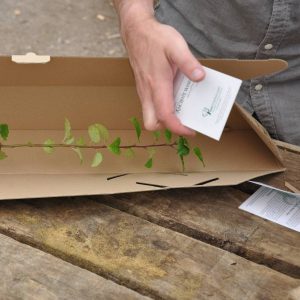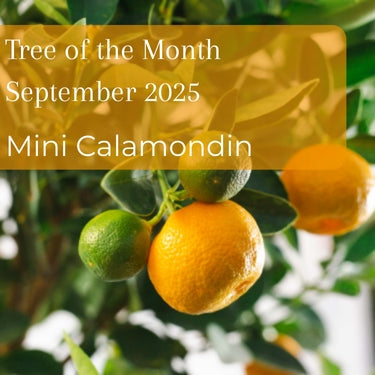Native Tree Quick Facts:
- Hardiness: Fully hardy. Suitable for growing across the UK and Ireland
- Height and spread: Variable
- Suitable for: Planting
- Difficulty: Easy
How to Care for Native Trees
Planting
 On receiving your native tree sapling, it's important that you remove it from the outer packaging immediately and store it in a suitable place until you're ready to plant - in winter, this may be a shed or garage to prevent frost damage. We advise that you plant your tree in winter when the tree is dormant and the roots are not growing. Either September/October or late February/March as the ground can become frozen solid in intervening months.
On receiving your native tree sapling, it's important that you remove it from the outer packaging immediately and store it in a suitable place until you're ready to plant - in winter, this may be a shed or garage to prevent frost damage. We advise that you plant your tree in winter when the tree is dormant and the roots are not growing. Either September/October or late February/March as the ground can become frozen solid in intervening months.
Due to the size, these tree saplings will eventually grow to, they are not suitable to keep as potted plants. If circumstances dictate, they may be grown in a large pot for up to 10 years, but really, it's best to plant them in the ground as soon as it's feasible to do so.
When choosing a site for your tree sapling to be planted, keep in mind how large it's going to grow. Keep larger trees well away from any buildings as the roots can cause damage to foundations if planted close.
Our tree saplings are delivered in biodegradable coir pots that can be planted straight into the ground, meaning the planting process is nice and simple, and the roots won’t get damaged. Dig a hole roughly three times the width of the roots of the tree, but no deeper. Add some rootgrow according to packet instructions, which helps plants by developing a second root system, then plant the tree and backfill any gaps with the soil mix you removed earlier.
Your little tree sapling will be growing rapidly in its first few years. Give it a good start by supporting it with a tree stake, and protect it from small animals and the elements with a tree protector tube.
Mulching
I t's unnecessary to feed your native tree species, as it should be able to gain all the necessary nutrients from the soil. However, it's a good idea to mulch the soil around your tree regularly, particularly in its early years.
t's unnecessary to feed your native tree species, as it should be able to gain all the necessary nutrients from the soil. However, it's a good idea to mulch the soil around your tree regularly, particularly in its early years.
Mulching is the term used for the layer of organic material that placed on top of the soil around your plants every year. It has a whole host of benefits, including keeping the soil moist and nutrient-rich throughout summer and discouraging weeds. The best time to do this is in late spring (April-May) or autumn (October).
First, prepare the ground by removing debris and weeds and water the surface of the soil if it's dry. Apply a thin layer of well-rotted manure or good garden compost all around the tree - we suggest using John Innes No. 3.
Watering
We advise you to water your native tree sapling regularly throughout spring and summer of its first year until the plant is established. Once this point is passed, the tree should be able to get all the necessary water from the surrounding ground, so will only require watering in times of drought or extreme heat.
Pruning
Most of our native tree species will require little or no pruning whatsoever and will do best if left to grow in a natural shape. If necessary, you can lightly prune these trees in winter to remove any branches that are dead, diseased or congested.
Native Trees in Winter
The majority of our tree sapling selection are deciduous trees, with the exception of holly and Nordmann fir. In autumn every year, these deciduous tree species will begin to their seasonal changes. The leaves will change from green to shades of yellow, red and brown, before dropping off. Expect the new leaves to grow again the following spring.
We have a range of stunning native trees, including oak trees.
For more facts and information check out the Tree2mydoor Tree Directory. Find lots of helpful information about our UK native trees such as Blackthorn Trees and Hazel Trees.


